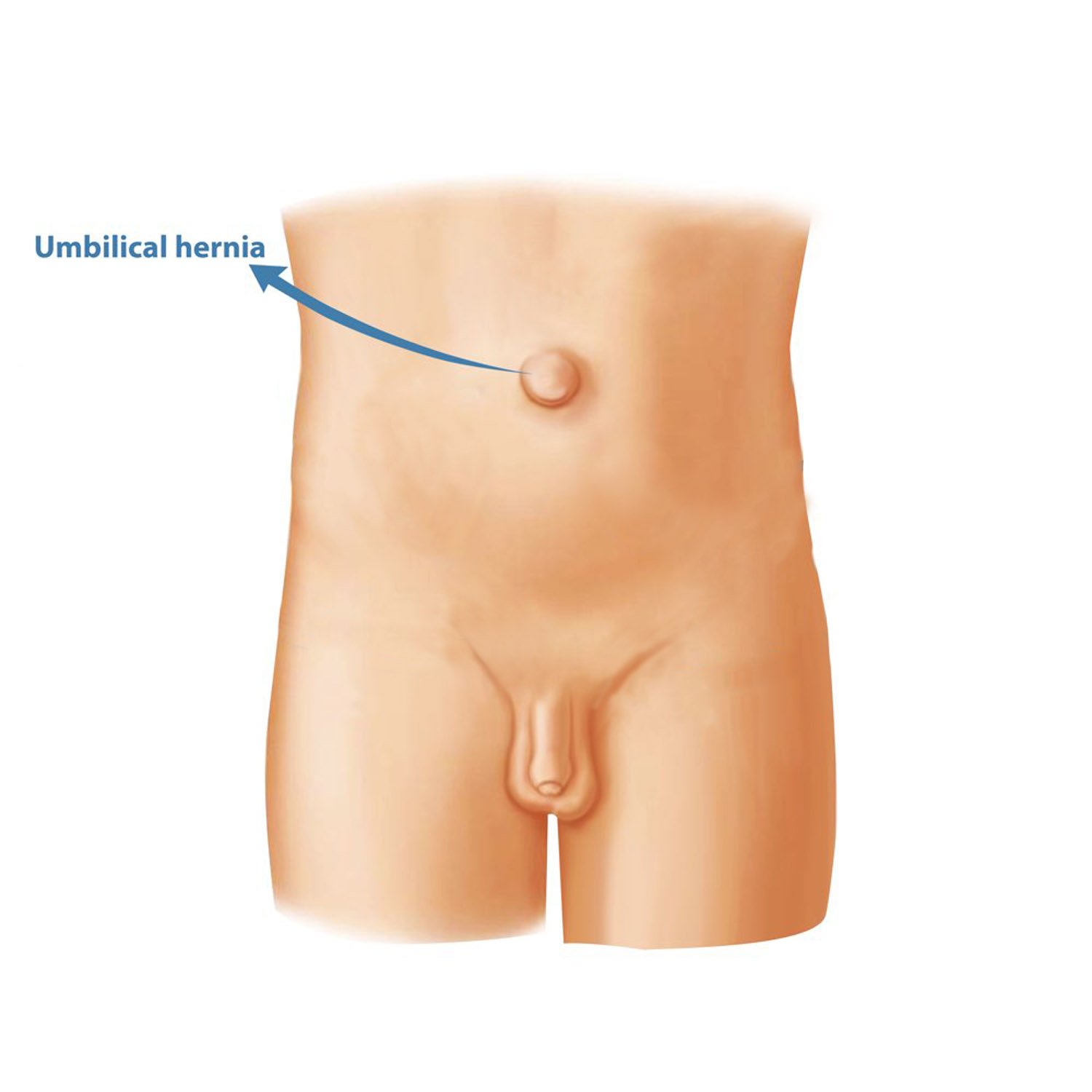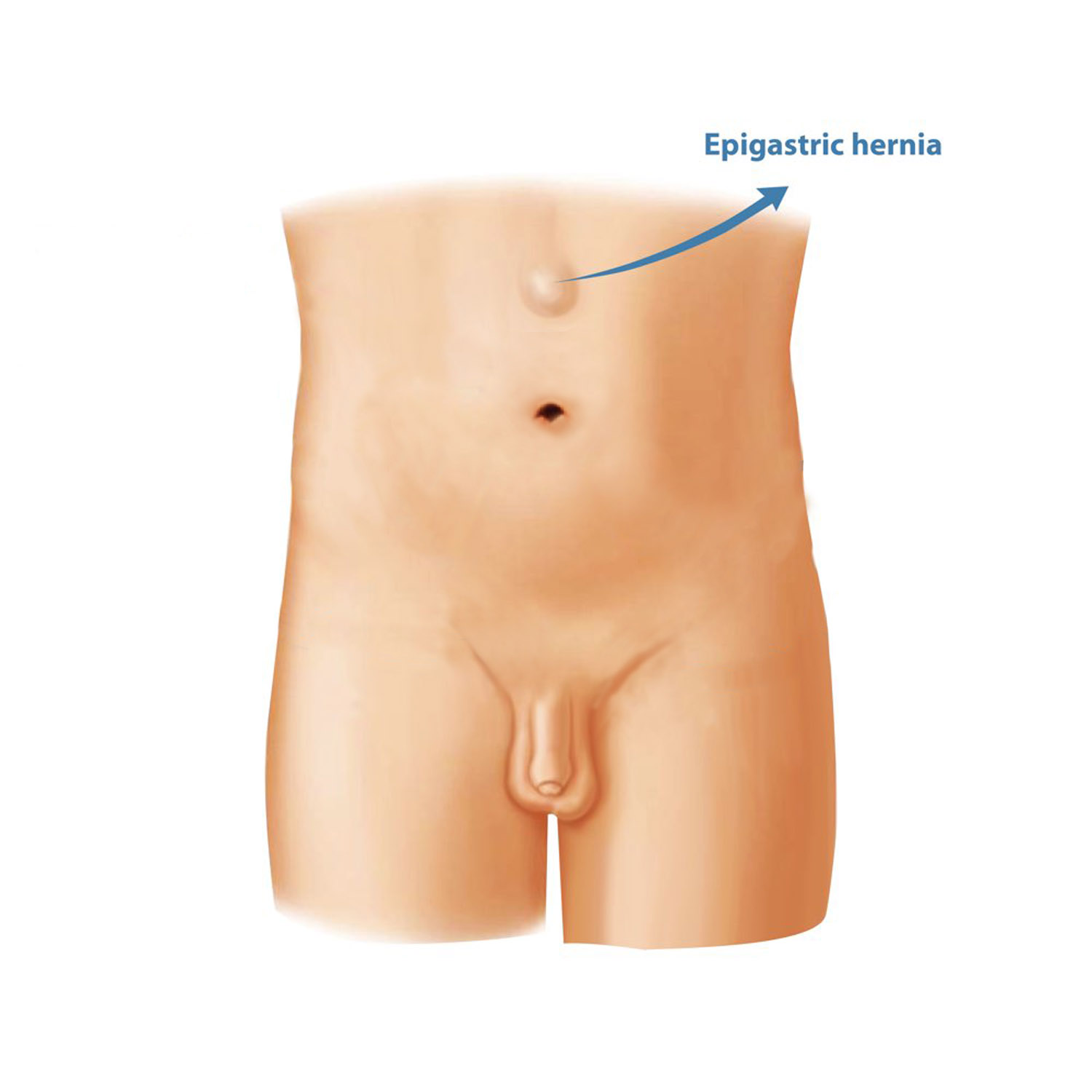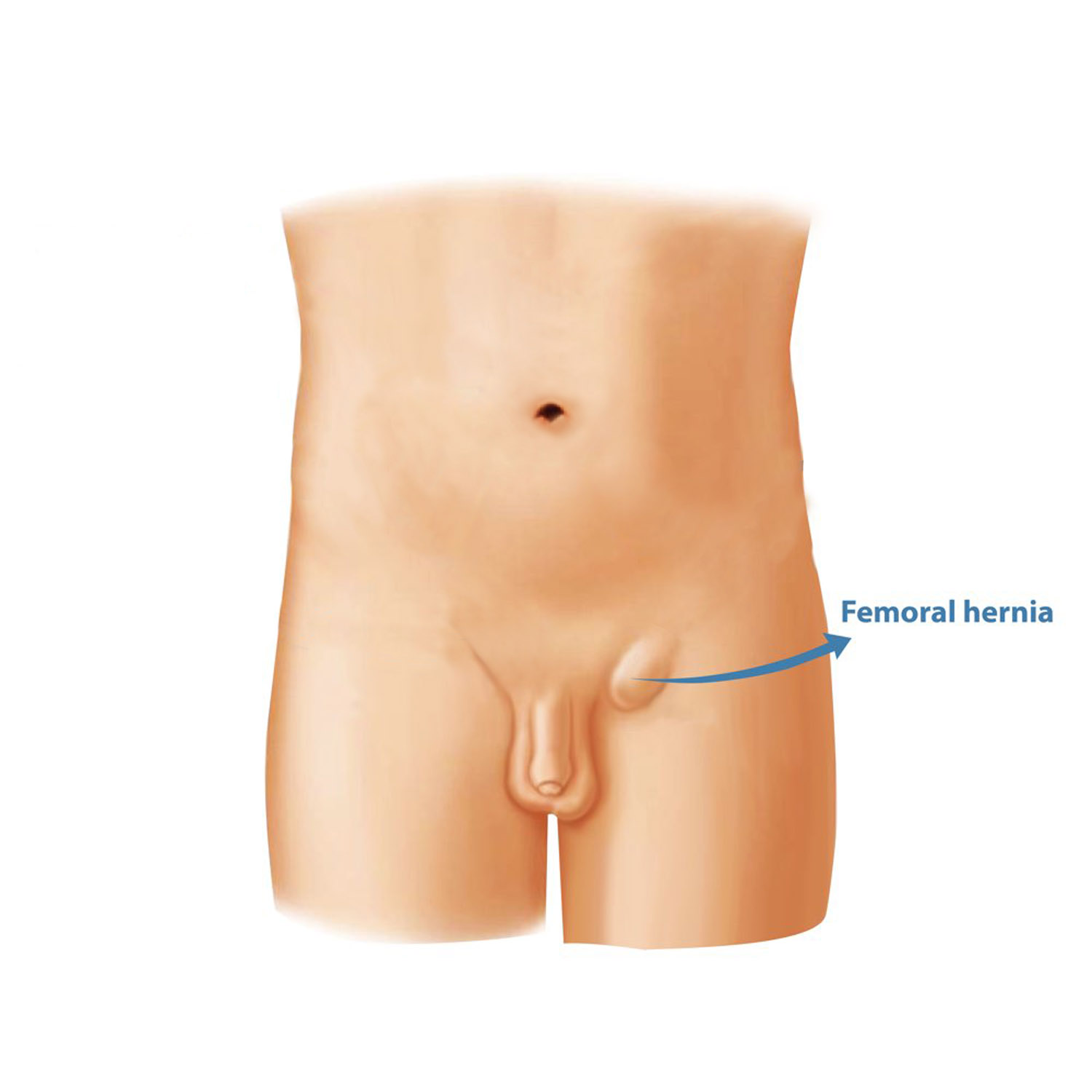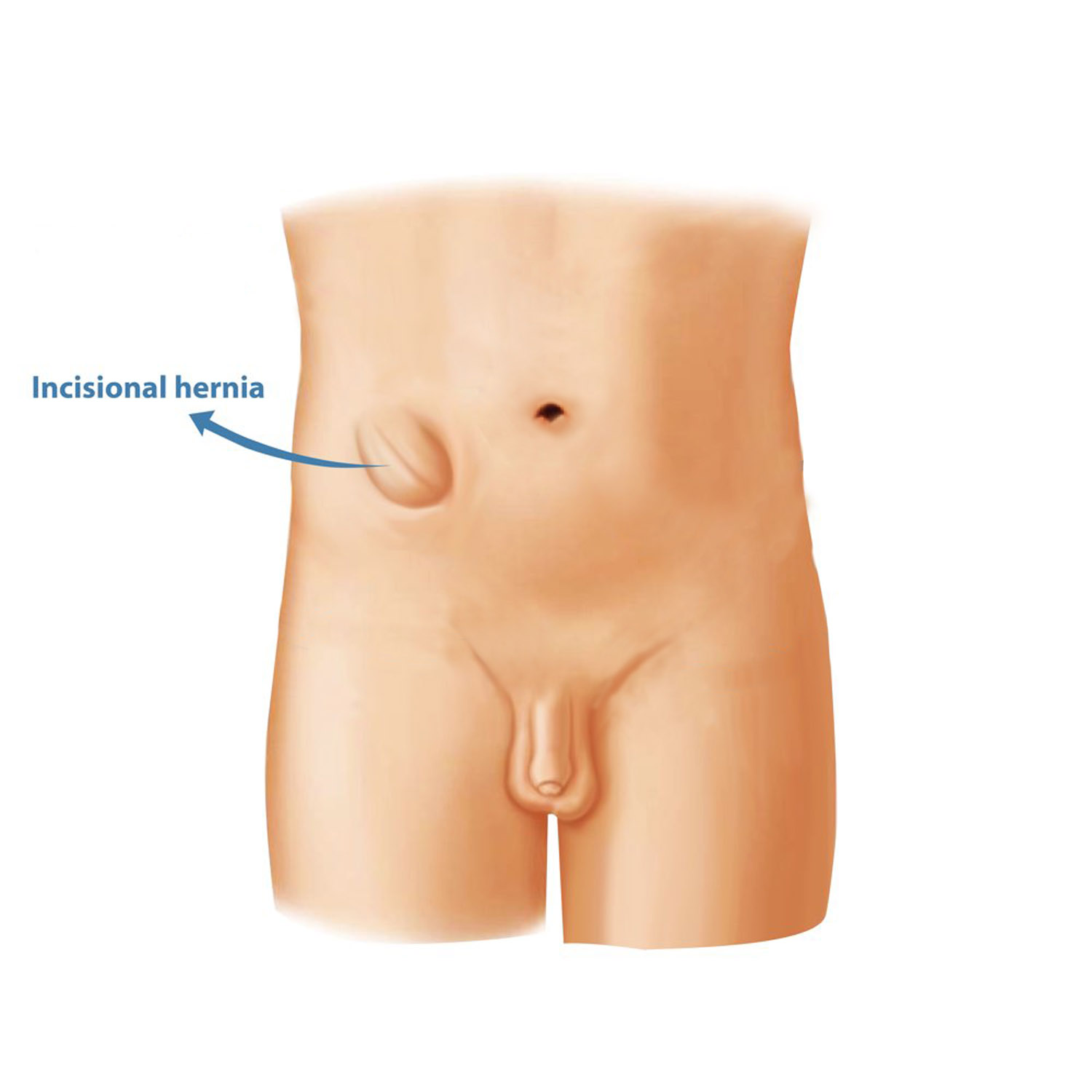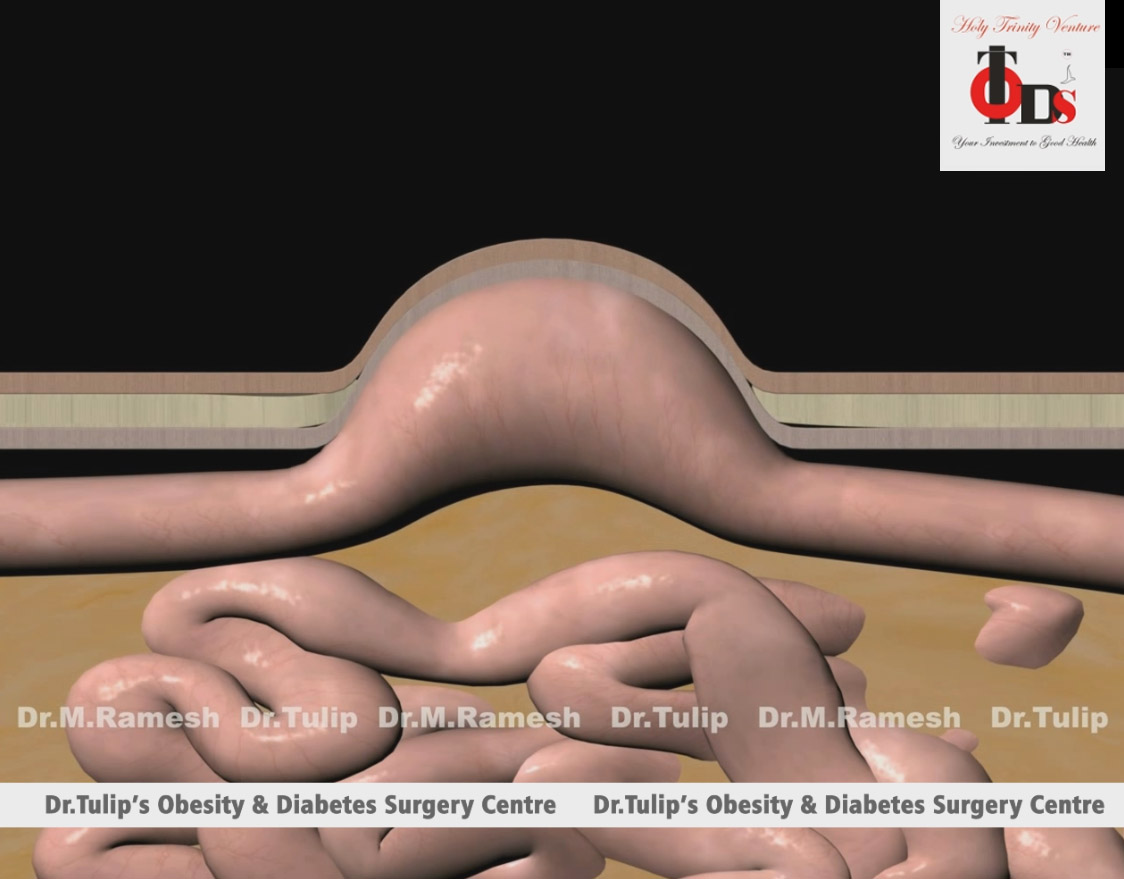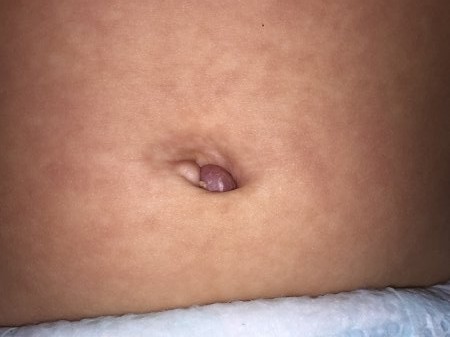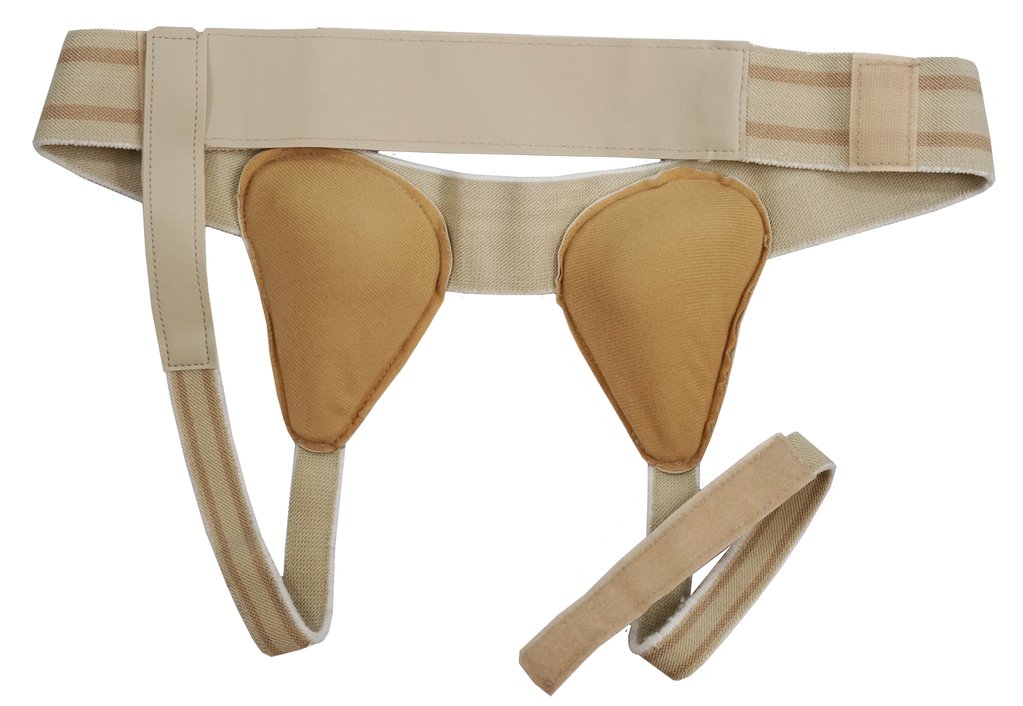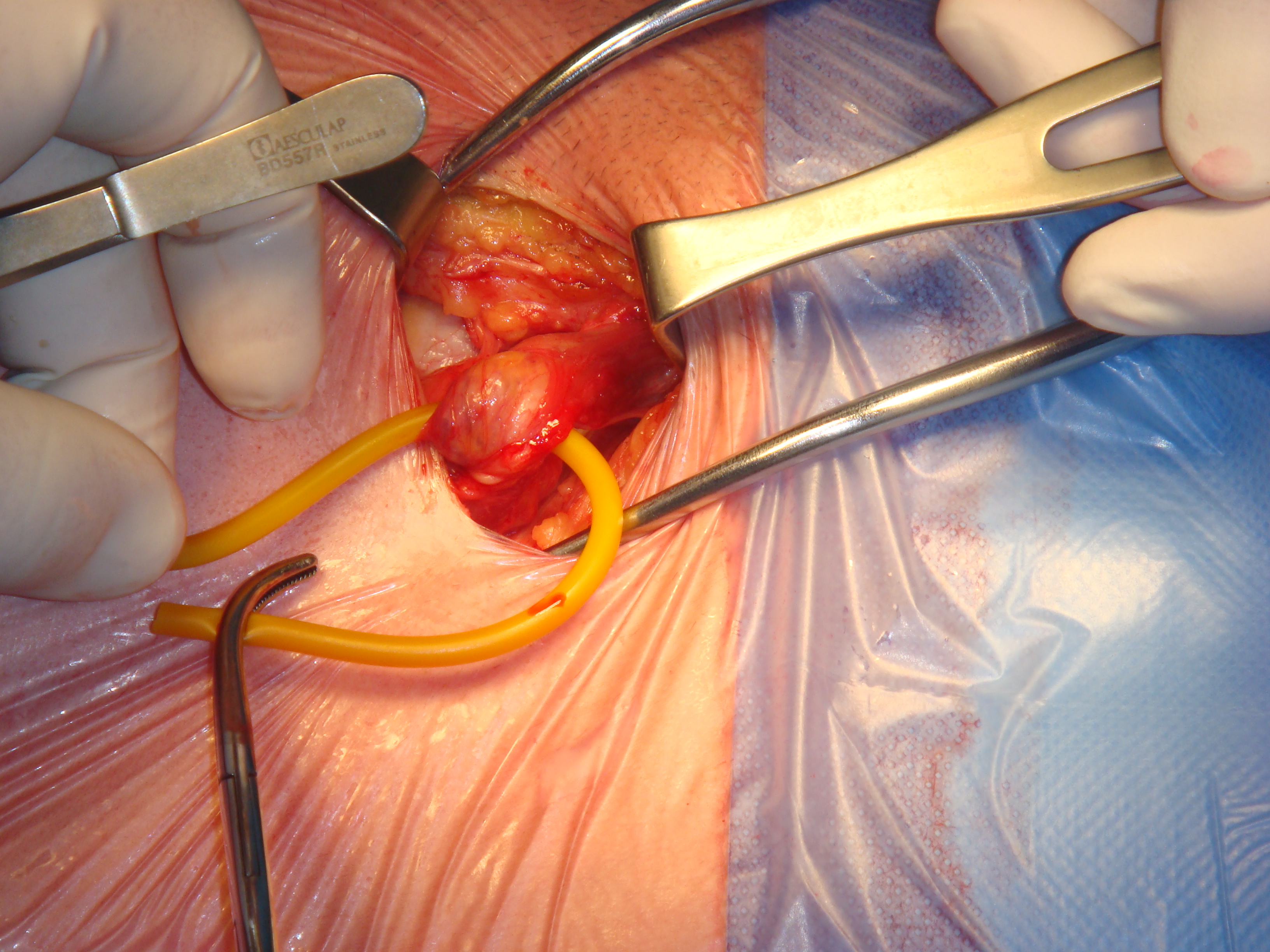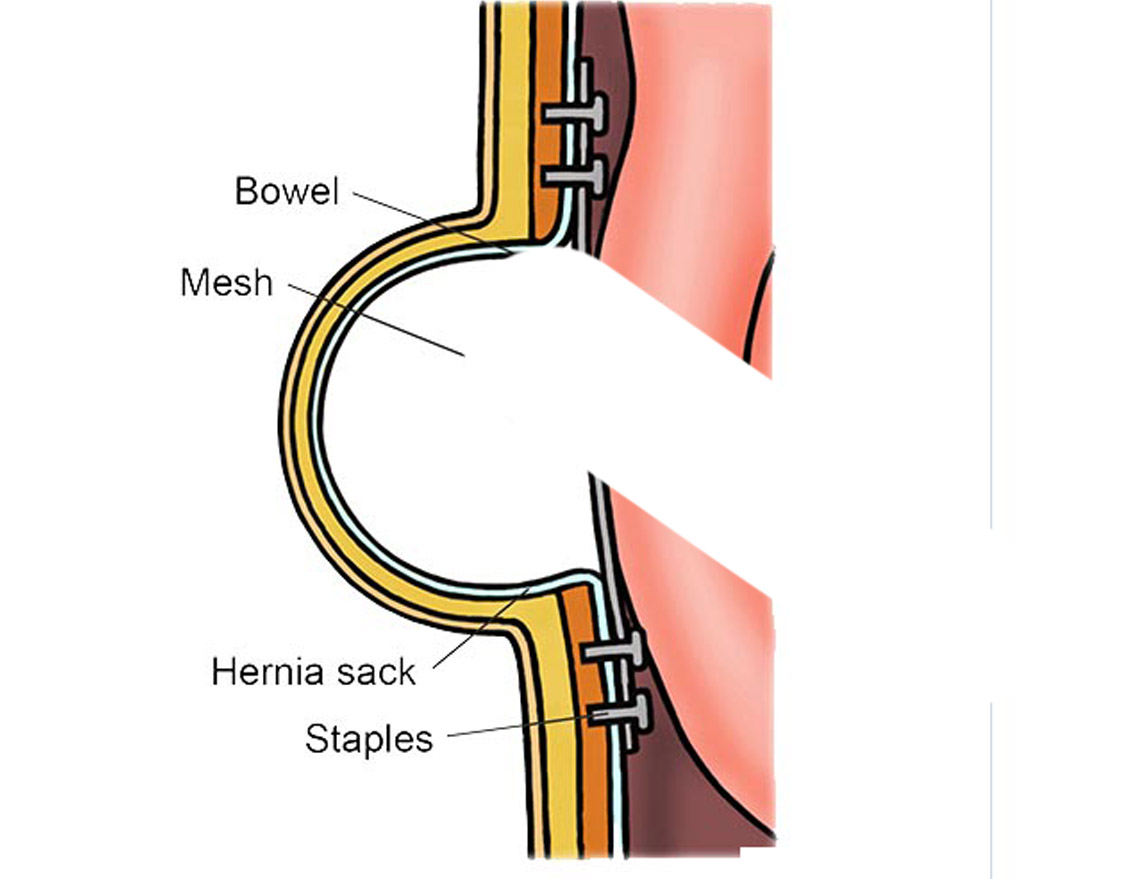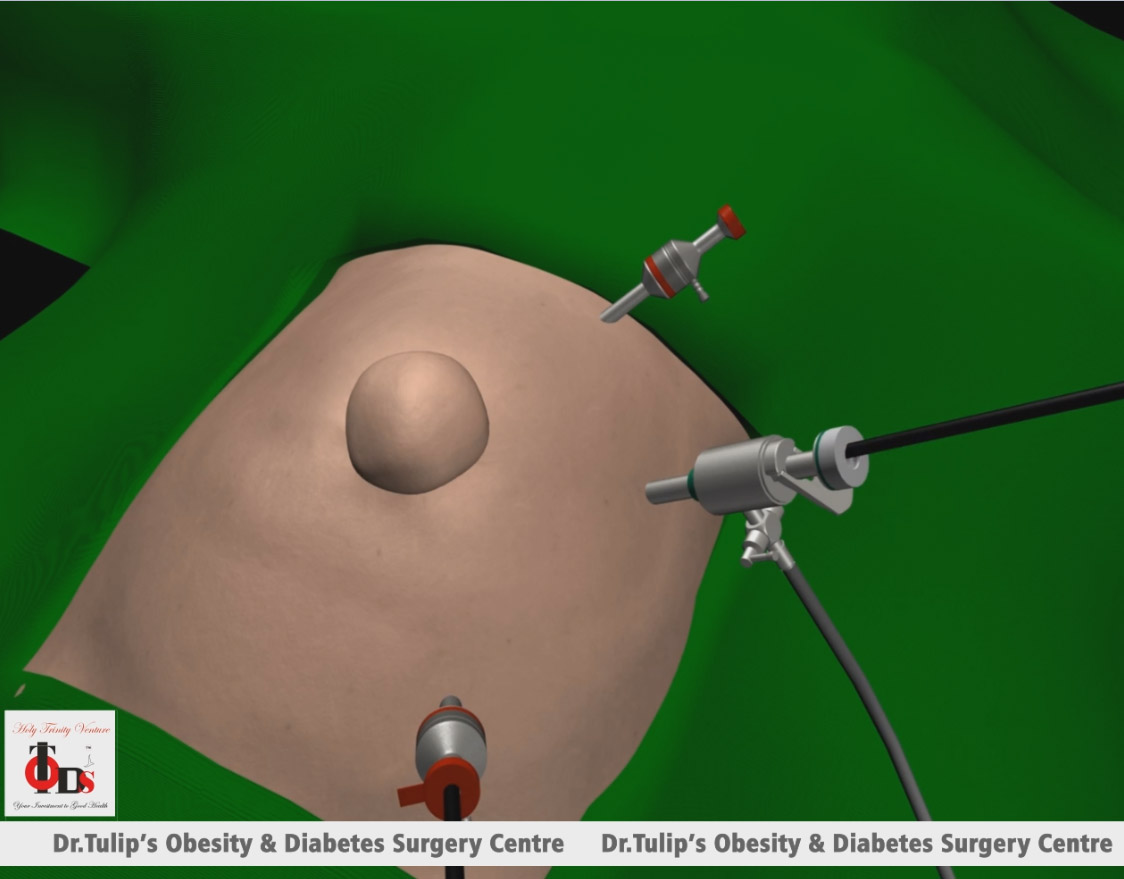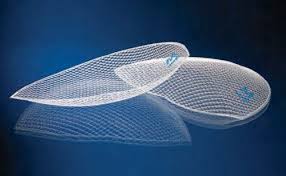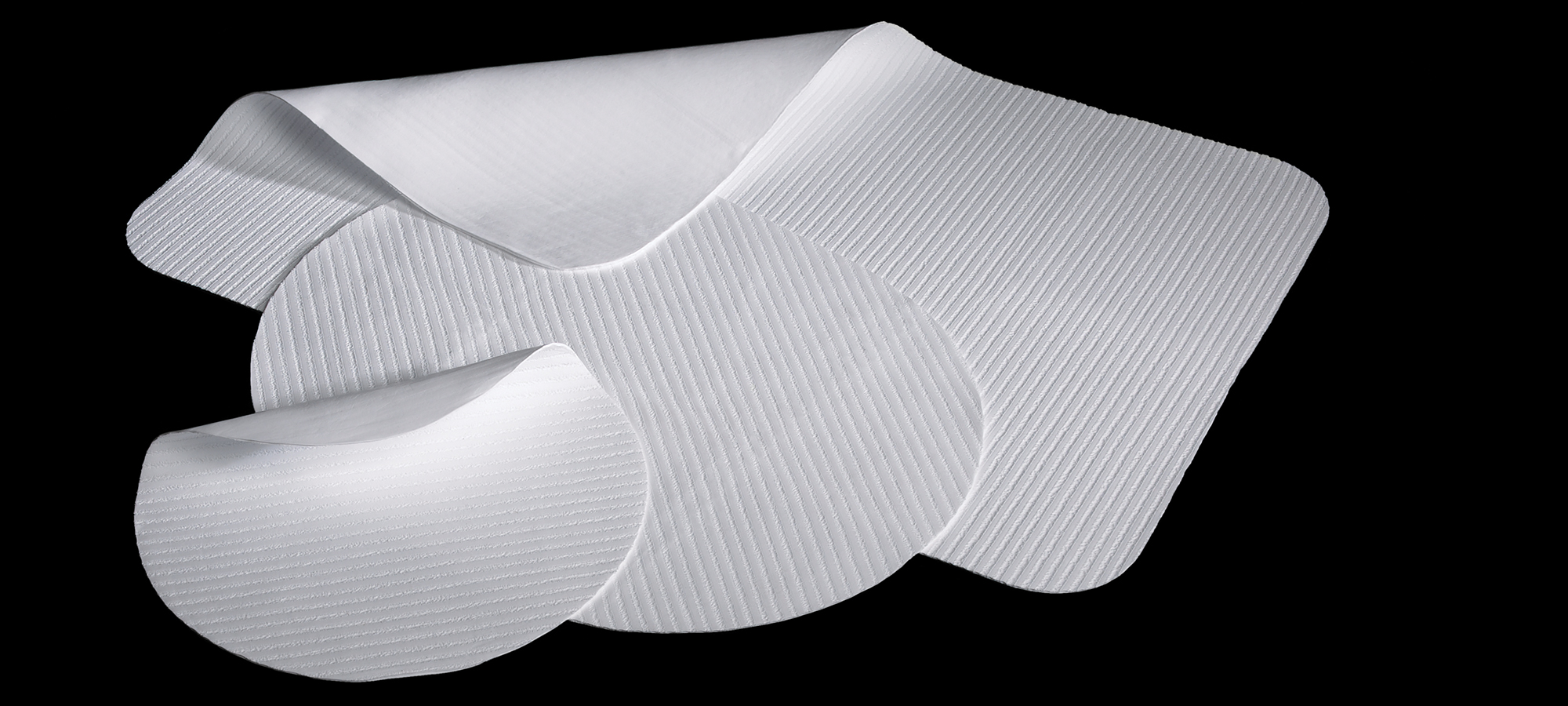Hernia
What is Hernia?
When an internal content of the abdomen, be it an intestine or omentum or organ leaves its original position and comes out through a defect or weak spot in the sheath/ muscle of the abdominal wall containing it, it causes a swelling in that particular area. This swelling is called a hernia.
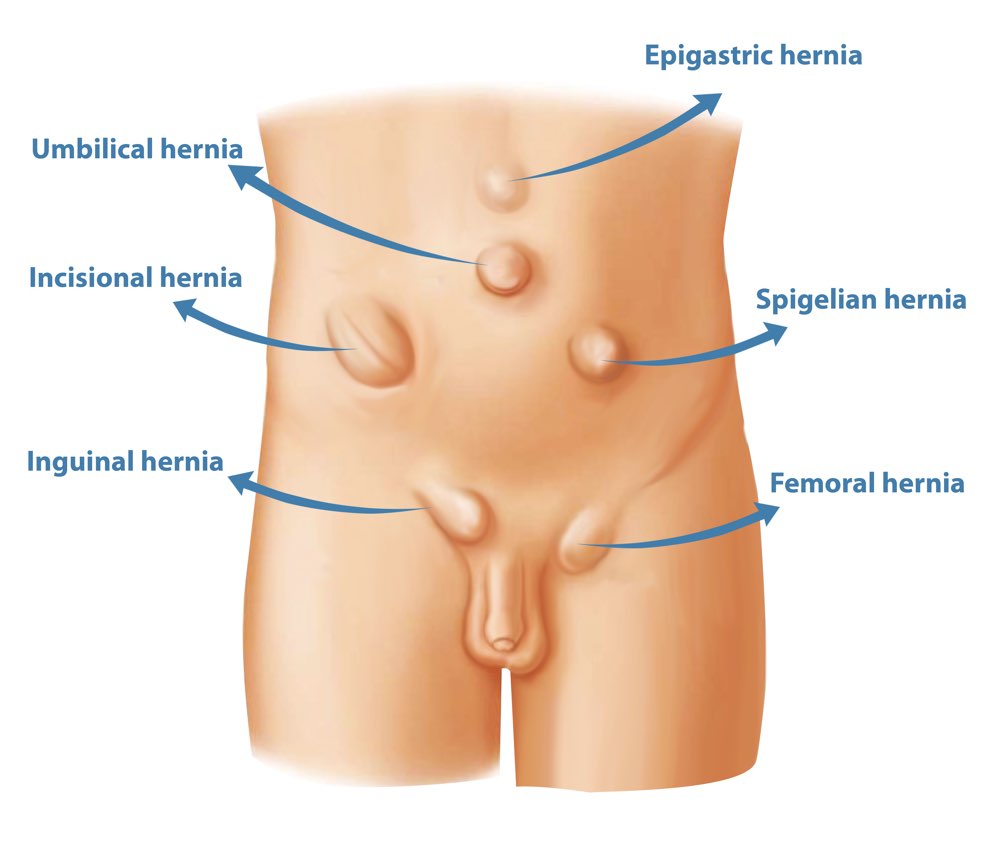
Our abdomen is protected by the abdominal wall, the main strength of which lies in the abdominal wall sheath and muscle. When the internal content e.g., intestine, or any organ leaves its original position and comes out through a weak spot or defect in
the sheath or muscle of the abdominal wall, it causes a swelling in that particular area, which is known as a hernia. These hernias are common in the morbidly obese population due to weakness in the muscle and sheath caused by over stretching
of the abdomen and excessive fat deposition n the muscle .
This swelling could be over the tummy, groin, thigh, or hiatus in the diaphragm and is named accordingly. Swelling around the umbilicus is called Umbilical or Paraumbilical hernia. It could be reducible ( herniated contents enter
back into the abdominal cavity completely) or irreducible ( herniated contents do not enter into the abdominal cavity completely .
Swelling in the upper abdomen is called an Epigastric hernia.
Swelling in the groin is called an ingunal hernia . Inguinal hernia is very common. It could be present at birth when it is called a congenital inguinal hernia. It can appear any time in adulthood or middle age and is mostly related
to some sort of increased pressure inside the tummy caused either by excessive or chronic cough over a long duration, or due to excessive straining during passing motion or lifting heavy weights.
Swelling in the upper thigh is called Femoral Hernia, it is not common
Incisional hernia is a swelling in the area of previous surgery scar. It occurs mainly if there is cough or infection after a surgery in the incision or wound area.
Early diagnosis and correct treatment resolve the problem fast.
The repair of all the above mentioned hernias are done through laparoscopy i.e key hole surgery. Use of a mesh during the surgery is very important for long term success of the hernia repair. Different types of mesh are available
which your doctor decides according to type of hernia you have.
If the person undergoing hernia repair is obese it is very important to inform and guide the patient to lose substantial weight and also not gain any weight for long term success of the surgery.
If the obese person does not lose weight or puts on further weight, then the chances of recurrence ( getting back the hernia) are very high . Bariatric surgery to lose the excessive weight could be the best answer in the morbidly
obese people having hernia, the hernia could be done before , with or after the hernia repair surgery depending on what requires more and prior attention according to the patients complaints.
Dr Tulip’s Obesity and Diabetes Surgery Hospital Bangalore offers the best diagnosis and treatment of Hernia. Expert doctors use modern techniques and state-of-the-art methods to find out the reason behind hernia and correct it.
When you are considering any Hernia surgery, then you are in safe hands there.
All surgical procedures are performed in the guidance of qualified doctors and using the best infrastructure.
